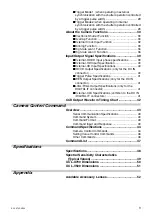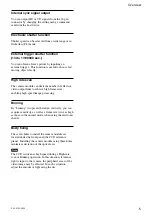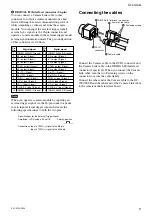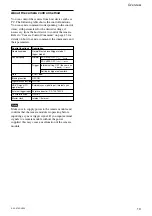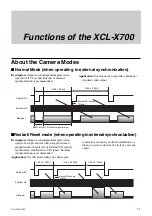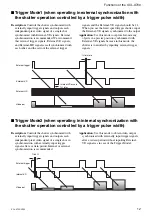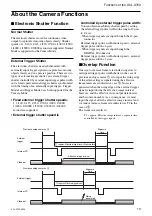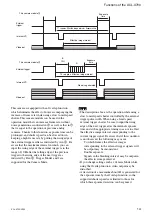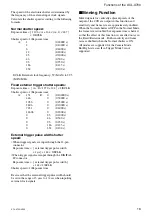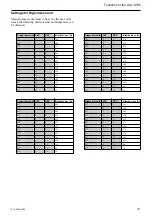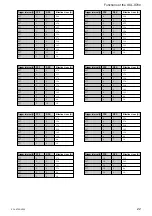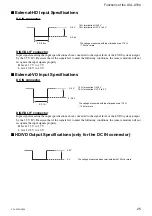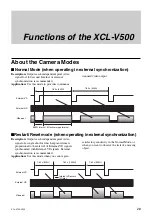
13
Functions of the XCL-X700
XCL-X700/V500
About the Camera Functions
■
Electronic Shutter Function
Normal Shutter
The electronic shutter is used for continuous video
output to capture fast-moving objects clearly. Shutter
speeds of 1, 1/100, 1/125, 1/250, 1/500, 1/1000, 1/2000,
1/4000, 1/10000, 1/20000 second are supported. Normal
Mode is supported for the Camera Mode.
External Trigger Shutter
The electronic shutter is used synchronized with
externally input trigger signals to capture fast-moving
objects clearly and in a precise position. There are two
types of external trigger shutter: an external trigger
shutter controlled by external input trigger pulse width
and a fixed speed external trigger shutter synchronized
with the timing of an externally input trigger. Trigger
Mode1 and Trigger Mode 2 are both supported for the
Camera Mode.
• Fixed external trigger shutter speeds:
1, 1/100, 1/125, 1/250, 1/500, 1/1000, 1/2000,
1/4000, 1/10000, 1/25000, 1/50000, 1/100000
second are supported.
• External trigger shutter speed is
controlled by external trigger pulse width:
You can obtain an arbitrary shutter speed by setting
the external trigger pulse width to the range of 2
µ
sec
to 1/4 sec.
- When trigger signals are input through the 12-pin
connector
External trigger pulse width shutter speed = external
trigger pulse width + 6
µ
sec
- When trigger signals are input through the
DIGITAL IF connector
External trigger pulse width shutter speed = external
trigger pulse width + 5
µ
sec
■
Overlap Function
One way to increase frame rate while using slow to
mid-speed trigger pulse width shutter in the case of
previous analog cameras
1
is to input the rising edge
of the external trigger signals during the effective
image interval as indicated in case
2
. Noise is
generated when the rising edge of the external trigger
signal is input during the effective image interval,
however, and the effective video output deteriorates
and becomes unusable. As a consequence, we must
input the signal after the effective image interval and
we cannot increase frame rate indicated as T2 in the
case of
2
.
The frame rate results in:
T1 = approx. Effective image in exposure time
controlled by the trigger signals
Internal-VD
External
trigger
Video out
Exposure
time
Previous analog cameras
1
T1 = approx. Effective image in Exposure time
Effective image interval
Internal-VD
External trigger
Video out
Exposure
time
Previous analog cameras
2
T2 = approx. Effective image interval
Noise
generated



